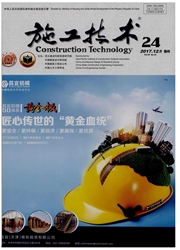

 中文摘要:
中文摘要:
为研究不同方法对湿陷性黄土地基的处理效果,结合平阳高速公路建设实例,介绍了灰土挤密桩法和强夯法在湿陷性黄土地基处理中的应用,并且通过室内试验分析比较地基加固前后的物理力学指标变化值,对单击夯击能为1000,2000kN·m的强夯法和灰土挤密桩法处理湿陷性黄土路基的效果进行了对比。结果显示,这两种不同能级的强夯处理和灰土挤密桩法都可以提高土体的物理力学性能、消除湿陷性,且2000kN·m单击夯击能的强夯处理效果最佳,灰土挤密桩法效果次之,1000kN·m单击夯击能的强夯处理效果最不显著。
 英文摘要:
英文摘要:
Based on Pingyang highway construction project, the improving effects of three soil treatment methods such as lime-soil compaction pile, dynamic consolidation methods of 1 000kN·m and 2 000kN·m were compared in this paper through contrasting the changes of soil physical and mechanical indexes before and after treatment. Meanwhile, the improving mechanics of either lime-soil compaction pile or dynamic consolidation methods for collapsible loess ground were introduced and discussed. The laboratory test result showed that dynamic consolidation methods with 1 000kN·m and 2 000kN·m and lime-soil compaction pile were all effective to improve collapsible loess' engineering property and decrease its collapsibility. Among these three methods, the strengthening effect of dynamic consolidation method with 2 000kN·m energy is the best method, lime-soil compaction pile secondly, and dynamic consolidation method with 1 000kN·m energy was the third one.
 同期刊论文项目
同期刊论文项目
 同项目期刊论文
同项目期刊论文
 期刊信息
期刊信息
